In its recent earnings call, Costco’s CFO gave a unique warning about the potential for a slowdown or recession. As shown below, courtesy of The Transcript, Costco warns they are seeing shifts in what customers are buying. Such consumption shifts are similar to those Costco witnessed during the 2008 and 2000 recessions. In particular, Costco says customers are shifting purchases toward cheaper meats like pork or chicken and canned meats. Further, sales from Costco’s brand, Kirkland, rose 1.2% last quarter, much greater than prior Kirkland sales growth, as customers are seeking lower-cost alternatives to the more popular name brands. In another signal that customers seek to save money, Costco’s CFO said its customers are buying apparel “in a big way.” Again, some of its customers are likely shifting purchases to Costco from the more traditional and expensive stores and name brands.
From Costco’s view, it may appear consumers are struggling. But, it is also possible consumers’ spending habits are changing. For instance, per the Census Bureau’s latest retail sales report, total retail sales are only .15% higher this past April versus April 2022. However, spending at food services and drinking places is up 8%, while clothing stores are down 4.13%. Inflation and the odd spending habits which occurred during the pandemic are still wreaking havoc on economic data. Typical economic patterns and warnings are not proving, at least not yet, reliable.
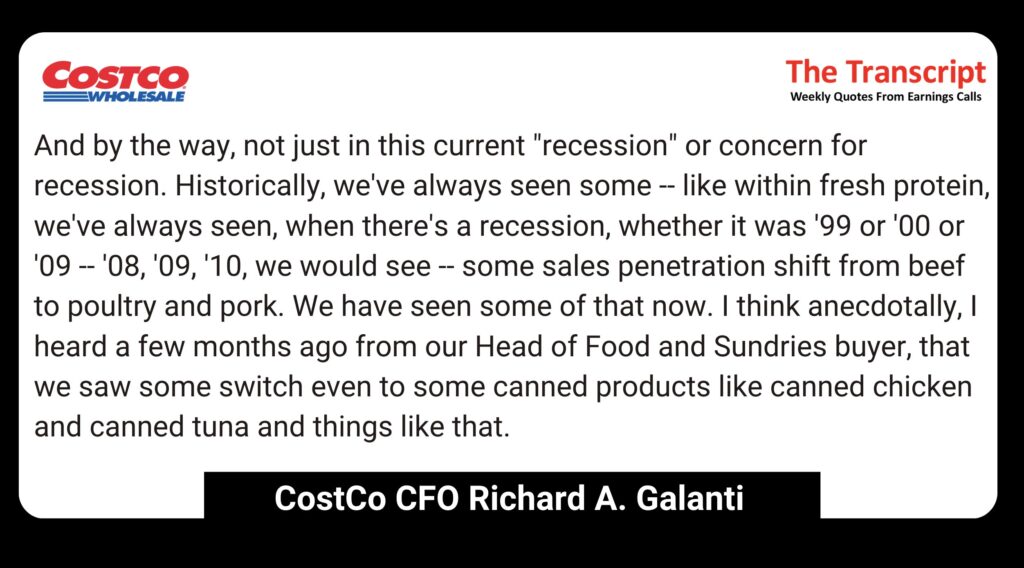
What To Watch Today
Earnings

Economy
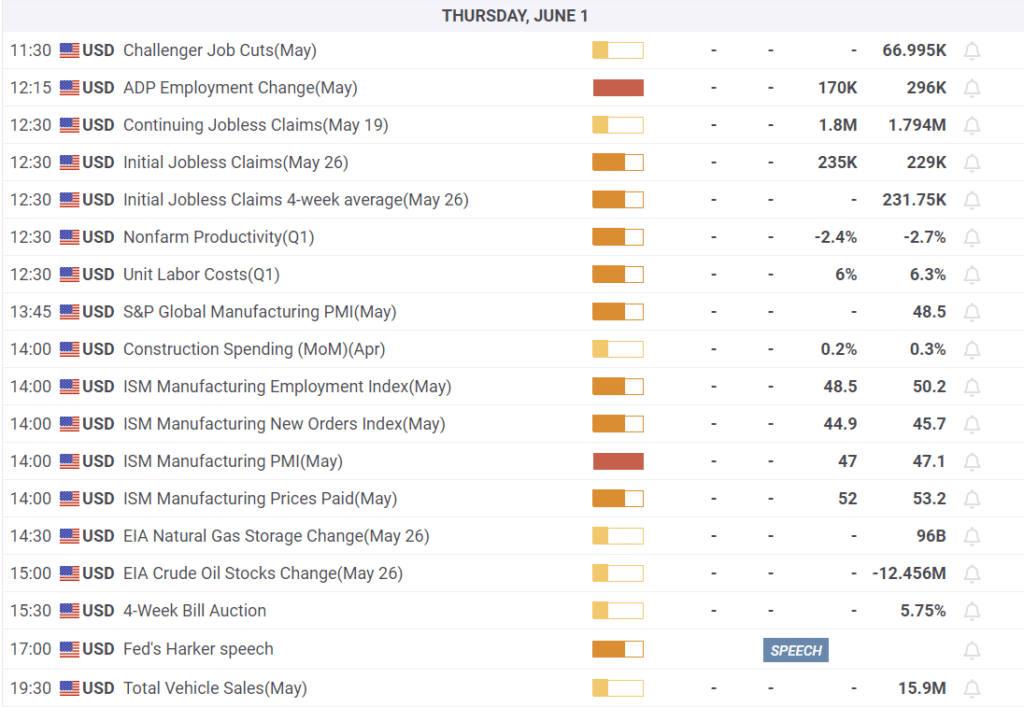
Market Trading Update
The market pulled back a bit yesterday ahead of the vote on the debt ceiling bill by the House of Representatives. Interestingly, the market continues to confirm its bullish trend by establishing consistently higher highs and lows. So far, that trend continues with support running along with the rising 50-DMA and trend line support from the October bottom. There is also support at the 200-DMA as well.
While markets have gotten a bit overbought short-term, pullbacks to support should be bought until the technicals suggest differently. As we noted on Tuesday, there is a reasonable setup for a rotation from Technology, Discretionary, and Communications to virtually all other sectors this summer. The skew between cyclical and defensive is quite broad and is not historically sustainable. However, these deviations can last longer than logic would suggest, but the rotations do eventually occur. In other words, don’t forget to take profits.
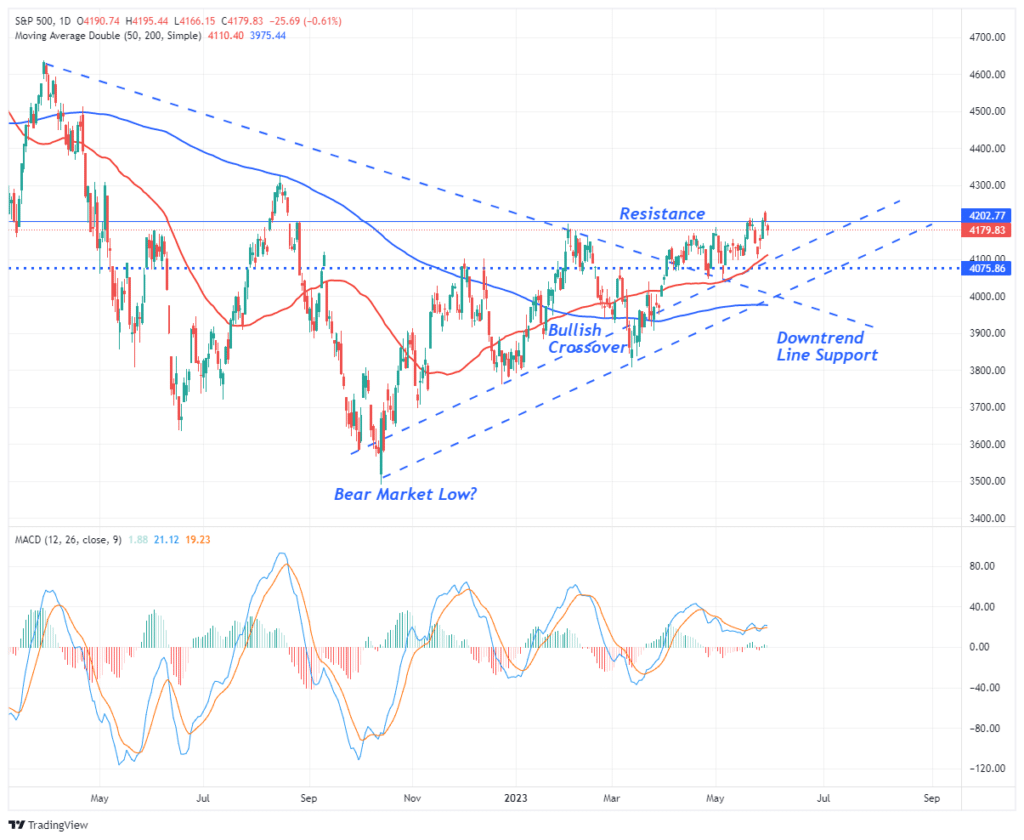

Valuations and Momentum
The graph below, courtesy of Fidelity, shows that forward P/E valuations are at their peak in the last year. Yet, they are still well below the levels seen in the two years after the pandemic started. More interesting, note that peaks and troughs in the “lower range,” representing the last year, correspond with highs and lows in momentum (RSI). However, the current peak in the forward P/E is accompanied by a minimal number of stocks with strong momentum. The prior two peaks had a quarter to a third of stocks with high RSI scores. This graph is another indicator telling us the market’s breadth is terrible.
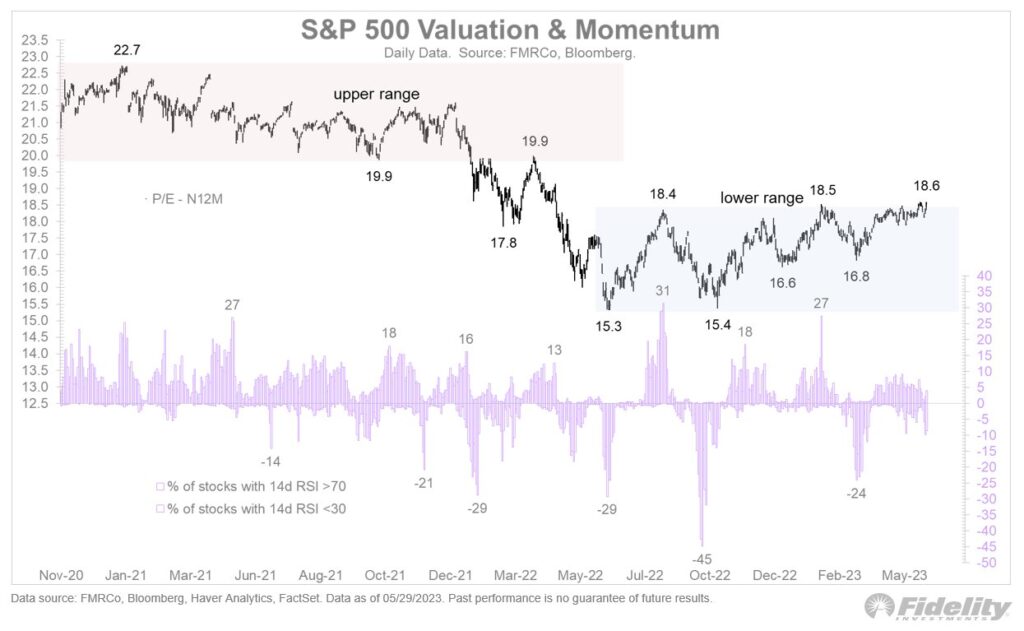
Stock Markets Climb a Wall of Worry
In our latest Technical Review of the Market, Lance Roberts provides fodder for the AI bulls and the fundamental bears. He reassures the bulls with the following quote and the chart below it:
However, the bulls can also make a compelling case. The technical dynamics and improving earnings are certainly supportive of the rally. Technically, the correction from January 2022 to the long-term bullish trend line of the 200-week moving average is complete. With the market holding that support and moving above the 40-week moving average provides further validation.
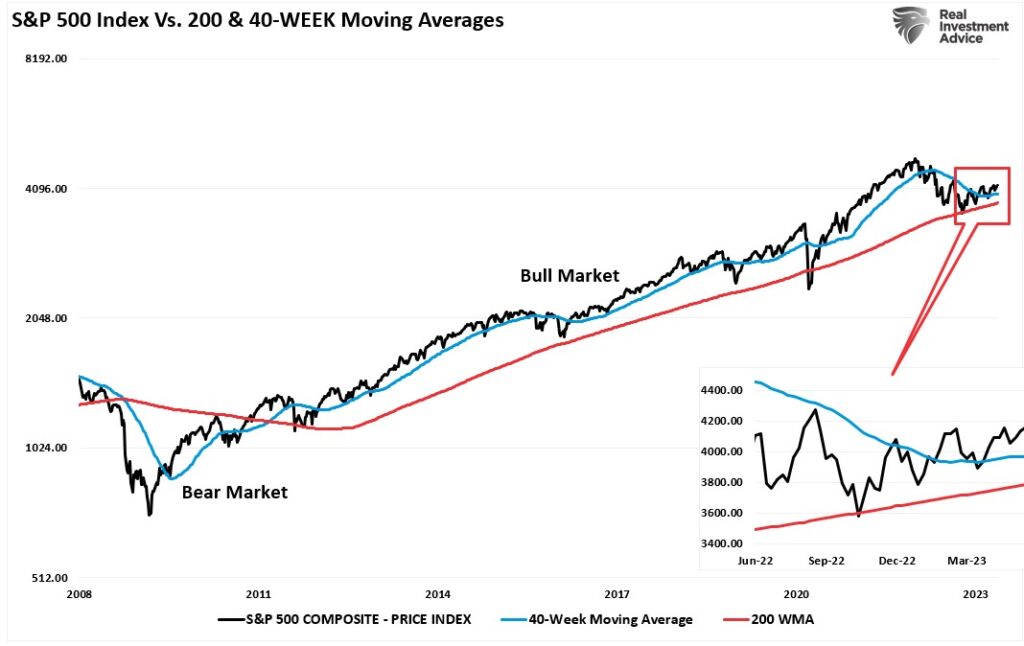
However, the bearish case has a lot of merit too.
The bearish case is compelling, given higher interest rates, increased debt levels, and slowing economic activity. Our Economic Composite Index (which comprises more than 100 data points) suggests the economy will enter a recession over the next 6-months.

The article ends:
While there are many reasons to be bearish on the markets, it is essential to remember that “stocks climb a wall of worry.”
The current market advance looks and feels like the Dot.com advance in 1999. How long it can last is anyone’s guess. However, importantly, it should be remembered that all good things come to an end. Sometimes, those endings can be very disastrous to long-term investing objectives.This is why long-term returns tend to take care of themselves by focusing on “risk controls” in the short term and avoiding subsequent major draw-downs.
JOLTs
Our first employment gauge of the week, JOLTs, proves the labor market remains tight. The number of job openings ticked higher to 10.1 million. Job openings increased the most in retail trades, healthcare, and transportation. Further supporting what appears to be a strong labor market, the total number of separations, including those that quit, fell by 286k and stands unchanged at 3.7%.
The JOLTs report is for April, not May, like ADP and Friday’s BLS report; therefore, the aforementioned reports will be a little more timely.
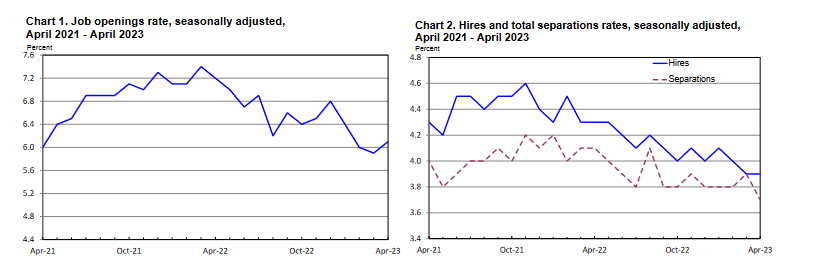
Tweet of the Day
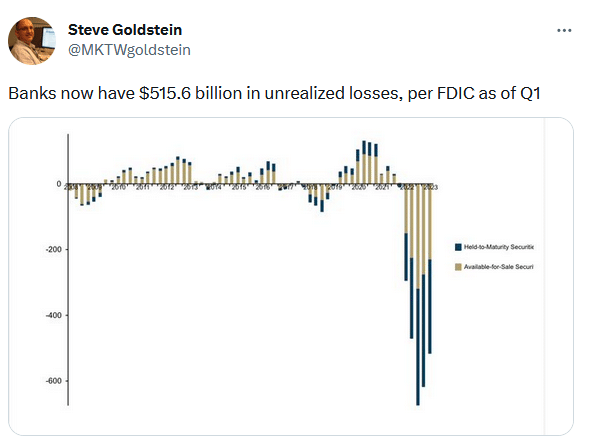
Please subscribe to the daily commentary to receive these updates every morning before the opening bell.
If you found this blog useful, please send it to someone else, share it on social media, or contact us to set up a meeting.
Also Read

















